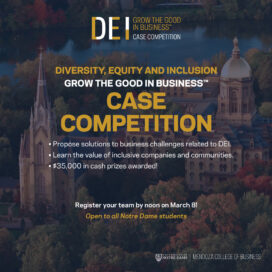5 Questions to Tell If Your Brand Strategy is Ready for Social Media
Published: August 3, 2010 / Author: Carol Phillips

I am a conference junkie. I attended three marketing ‘summits’ in one three week period last month. The topic at all three was the same: the challenge of social media. The level of buzz about buzz among seasoned marketers is unprecedented in my career. Why such a stir over something that still represents such a minuscule portion of marketing budgets?
The answer is that social media is a potential game changer.
‘Conversation marketing’ (do we even have a name for it yet?) is enabling unprecedented levels of customer intimacy when done right. It touches every marketing discipline from customer service to corporate PR. It is going beyond marketing to have impact in areas such as productivity, cost control and HR. Social media has special resonance among young consumers, every brand’s future market.
Social media has caused us all to take a second look at digital marketing, which frankly I lost interest in when it started being more about ever more efficient ways to generate clicks and impressions, exchanges and optimization. As a result of social media, there is a resurgence of creativity in integrated marketing that hasn’t been seen since Burger King featured a funky chicken, BMW offered free 7-minute feature films and Audi stole its own car.
Within the industry, social media is sparking a major reshuffling of the decks at mega-communications agencies and small shops alike. Each is scrambling to ensure they are well-positioned to offer the communications services of the future, whatever they may be.
It is an exciting time to be a brand marketer. But it’s also a challenging one.
The rate of change is dizzying. In the midst of all the excitement, it’s worth asking whether the changes represent a new way of designing, building and managing brands? Or are they just a new and powerful tool in our tool box? The answer is especially important for educators like me who are trying to prepare students for the world as it will be, not the way we practiced it for the past twenty years.
Increasingly, I am inclined to think we may need to rethink our tools and frameworks for planning brand and marketing strategies in light of social media.
Fundamentals, of course, don’t change. Brand strategies explain how the brand will support business and marketing objectives and are a critical step in managing brands as valuable assets. Marketing strategies explain how a firm will grow revenue and share by acquiring new customers and by increasing the value of the customers they already have. But consider for a moment the complexity social media introduces when answering these basic brand and marketing strategy questions:
1. Who is the target?
With social media, the target may well extend far beyond typical category users. Many of those interested in Pepsi Refresh’s social action agenda are certainly not Pepsi drinkers and I would venture to say many of those who passed along Johnny Walker’s Man Who Walked Around the World video have little interest in Scotch.
Griffin Farley in its ‘brand propagation brief’ calls for planners to make a distinction between a brands’ “aspirational audience” and its “inspirational audience”. The aspirational audience is defined as those who will actually deliver your business objectives. The inspirational audience is defined as those who are more likely to engage with your creative assets or act on the creative to influence the aspirational audience.
2. What are our points of difference?
With social media, points of difference range well beyond unique selling propositions and what Leo Burnett called the brand’s ‘inherent drama’. The point of difference increasingly lies in shared interests or passion points, not in a single-minded, consistent message. A conversation is pretty short if you can only talk about one thing. A community that is all about products or services is pretty dull.
To stay relevant, brands need to develop a bigger cognitive ‘foot print’, identifying themes where the brand has credibility, and the consumer gives it permission to talk. Quality of content is now the point of difference. Tide can talk about water quality, Van’s shoes can talk about music, Dove can talk about young women’s self-image, and Dawn can talk about saving wildlife — provided their motivation is authentic and they back up their commitment with action. Pampers went from having a value of $3.5 Billion to a brand worth $19 Billion in three years according to Millward Brown’s BrandZ study by changing its focus to ‘helping moms develop healthy, happy babies’ rather than a strict category focus on ‘dry bottoms’.
3. What is the brand personality?
At a time when brands are people and people are brands, a well-defined and consistent personality is essential. Despite the excellent work of Jennifer Aaker in this area, defining brand personality has often been an afterthought, secondary to determining identity and positioning. It has sometimes been reduced to a set of adjectives meant to inform creative ‘voice’ or connect creative to consumer lifestyle.
Social media makes personality – how the brand’s content is uniquely expressed and brought to life — nearly as important as the message itself. Brands are becoming humanized at a rapid pace. If consumers are going to ‘talk’ to a brand or be part of a brand community, it’s only natural they would want to know who is behind the brand and what are the company’s values and motives.
4. How are we defining success?
Traditional marketing metrics still matter. Revenue and market share as well as brand metrics such as the ability of the brand to contribute to the bottom line through customer acquisition, loyalty and ability to command price premiums are not going away anytime soon. But new measures are popping up every day it seems.
Number of “FFF’s” (friends, fans and followers), Edelman’s ‘Trust Index’ and new metrics for evaluating ‘Social Currency’ are revealing new dimensions of brand equity. These aspects of brand value are likely to become more important over time. Starbucks and Apple have both been shown to have high Brand Social Currency scores, no doubt a result of their social media initiatives.
5. What message is most relevant?
Agency planners and market researchers use to labor long and hard to discover a polished diamond or two of ‘insights’ which could be translated into a brand platform and compelling message. Insights about how consumers relate to the category or the brand are no longer enough. Relevance is now more about connecting consumers more solidly with their community or culture than a brand pyramid or onion. Relevance comes from meaningful solutions to problems, access to information, branded utility, entertainment, gifts, thank you’s, well-timed help or connections to likeminded people.
Context also matters for relevance. What is the message of the Old Spice videos and does it even matter? These videos are fun and entertaining and gain relevance from interaction rather than content. Mobility will make context even more important in the future. Where you are when the message is received will matter as much as the message itself. I will care more about a reminder to use suntan lotion at the beach or drugstore than when watching TV.
Brand strategy needs to evolve to fit the times.
Does your brand strategy address these questions? If not it may be time for a second look. Social media is more than just a new medium, it may well represent an inflection point in the way we think about building and maintaining brands.
It’s no longer enough to articulate what the brand should stand for and who it should appeal to in broad terms. It’s not enough to define your niche and point of difference. We need to answer more than the question ‘what do we have to say?’ Now the question for brand strategists is ‘what can we create that will be of enough value that people will want to participate and talk about?’
/news_and_events/news_articles/article/7171/5-questions-to-tell-if-your-brand-strategy-is-ready-for-social-media




